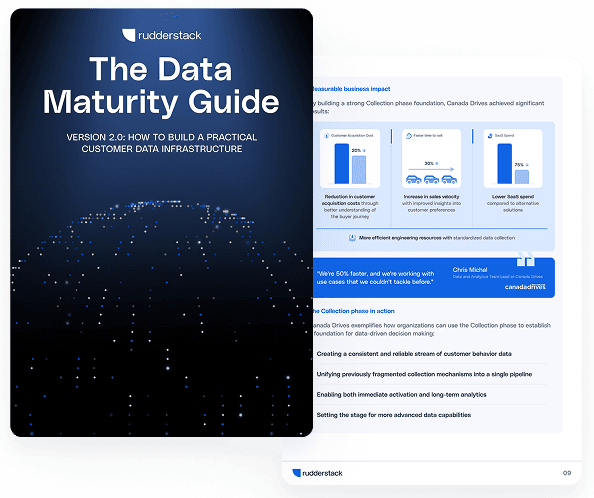Hybrid integration platform: What it is and how it works

Modern businesses face a growing challenge: connecting their legacy systems with new cloud applications. Without proper integration, data becomes fragmented across environments, slowing operations, increasing costs, and limiting innovation.
Hybrid integration solves this problem by securely connecting on-premises systems with cloud services. It enables real-time data exchange, standardizes communication, and orchestrates workflows across platforms, giving companies the flexibility to modernize without disrupting core systems.
In this article, we'll explore what hybrid integration is, how it works, key use cases, and the tools and architectures that support a scalable, future-ready approach.
Main takeaways:
- A hybrid integration platform connects cloud and on-premises systems, enabling seamless data flow, real-time processing, and long-term infrastructure flexibility
- Core components include secure gateways, API management, event-driven workflows, and orchestration tools that ensure consistent integration across environments
- It supports gradual cloud adoption without disrupting legacy systems, making it ideal for enterprises with complex or regulated IT landscapes
- Built-in security features like encryption, access control, and audit logs help maintain compliance across hybrid architectures
- Choosing between building or buying a platform depends on your team's expertise, time constraints, and long-term maintenance capacity
What is a hybrid integration platform?
A hybrid integration platform connects applications, data, and processes across both cloud and on-premise environments, enabling seamless communication between legacy systems and modern cloud services. It provides the technical foundation for organizations to modernize their IT infrastructure while preserving existing investments.
Key capabilities include:
- Connectivity: Links cloud applications with on-premises systems
- Data movement: Transfers information securely between environments
- Process automation: Orchestrates workflows across hybrid landscapes
- API management: Standardizes how applications communicate
Hybrid integration solutions differ from traditional integration tools by specifically addressing the challenges of multi-environment architectures. While conventional tools often focus on a single environment, hybrid approaches bridge the gap between your legacy systems and cloud innovations.
The hybrid integration approach allows you to adopt new technologies at your own pace without disrupting critical business processes. This balance of innovation and stability is why hybrid integration platforms have become central to enterprise IT strategies.
Why does hybrid integration matter?
Most enterprises operate in mixed IT environments with both legacy on-premises systems and modern cloud applications. This hybrid reality creates integration challenges that can't be solved with cloud-only or on-premises-only approaches.
Hybrid cloud integration matters because it allows your business to evolve technology without disruption. You can modernize gradually while maintaining operational continuity.
Key business drivers for implementing hybrid integration include:
- Preserving legacy investments: Continue leveraging valuable on-premises systems
- Supporting cloud adoption: Connect new cloud services to existing infrastructure
- Ensuring business continuity: Maintain operations during technology transitions
- Enabling innovation: Adopt new capabilities without replacing entire systems
By connecting diverse technologies, hybrid integration solutions help you balance stability with innovation. This approach is particularly valuable for organizations in regulated industries where complete cloud migration isn't always feasible.
📊 Global integration complexity is growing
Global data creation hit an estimated 149 zettabytes in 2024, and it's expected to more than double by 2028. As organizations manage growing volumes across fragmented systems, hybrid integration is critical for scalability, speed, and control.
Core components of a hybrid integration system
A complete hybrid integration architecture consists of several essential components working together to enable seamless data flow between environments.
Secure data gateways
Secure data gateways control how information moves between cloud and on-premises environments. They encrypt sensitive data in transit and enforce security policies at the boundary between systems.
These gateways establish secure connectivity channels that protect information while allowing necessary data exchange. They often include features like data filtering, protocol conversion, and access control to ensure only authorized data flows between environments.
API management
API management provides tools to create, publish, and monitor the application programming interfaces that enable different systems to communicate. APIs serve as standardized connection points between applications regardless of where they're hosted.
API-led connectivity simplifies integration by creating reusable services that expose functionality from both legacy and cloud systems. This approach makes it easier to build new capabilities without disrupting existing processes.
Data workflows and orchestration
Data workflows automate the movement and transformation of information across your hybrid environment. Integration middleware manages these workflows, handling tasks like:
- Data mapping between different formats
- Scheduled transfers of information
- Conditional processing based on business rules
- Error handling and retry logic
These orchestration capabilities ensure that your business processes flow smoothly across system boundaries.
Event-driven integrations
Event-driven architecture enables real-time integration by responding to changes as they happen. Instead of checking for updates on a schedule, systems react immediately when important events occur.
This real-time integration approach supports use cases like inventory updates, customer interactions, and transaction processing. By responding to events in the moment, your business can operate more efficiently and deliver better customer experiences.
How hybrid integration works in practice
Hybrid integration solutions connect systems through secure gateways, APIs, and automated workflows. A typical integration process might follow these steps:
- A business event triggers data movement (like a new customer order in your e-commerce platform or a customer update in your CRM)
- The integration platform captures this event and determines routing based on predefined business rules, data classification, and destination requirements
- Data passes through secure gateways between environments with encryption, authentication checks, and compliance verification occurring at boundary points
- APIs facilitate communication between different applications using standardized protocols (REST, SOAP, GraphQL) and data formats (JSON, XML) that normalize information exchange
- Workflows transform and deliver information where it's needed, applying business logic, data mapping, format conversion, and validation rules before confirming successful delivery
The integration solution provides visibility into these processes, allowing you to monitor performance, troubleshoot issues, and ensure data integrity across environments. This centralized control is key to maintaining reliable operations in complex hybrid landscapes.
Build or buy: Integration considerations to make
When implementing a hybrid integration strategy, you'll need to decide whether to build a custom solution or purchase a commercial product. Each approach has distinct advantages and challenges.
1. Time and resource costs
Building your own integration solution offers complete customization but requires significant upfront investment. Purchased solutions deliver faster implementation but may require configuration to meet specific needs.
Consider these factors:
- Internal expertise: Do you have the skills to build and maintain complex integration systems?
- Time constraints: How quickly do you need to implement your integration strategy?
- Budget structure: Would you prefer capital expenditure (build) or operational expenditure (buy)?
The right choice depends on your organization's specific circumstances and resources.
2. Maintenance and updates
Custom-built integration solutions require ongoing maintenance to remain secure and compatible with evolving technologies. Commercial products typically include regular updates and support, reducing the burden on your internal teams.
As integration standards, security requirements, and connected systems change over time, maintaining your integration platform becomes a significant commitment. Factor this long-term responsibility into your decision-making process.
3. Technical expertise
Implementing hybrid integration requires specialized skills in areas like API development, data mapping, and security protocols. If your organization lacks these capabilities, a commercial solution can provide built-in expertise and best practices.
The complexity of hybrid environments often demands a combination of technical knowledge about both legacy systems and modern cloud architectures. Consider your team's expertise when choosing your approach.
Key benefits and use cases of hybrid integration
Hybrid integration solutions deliver several important advantages for organizations managing complex IT environments, including enhanced operational flexibility, reduced data silos, streamlined compliance management, and cost optimization through gradual modernization.
These platforms bridge technological gaps that traditional integration approaches can't address, particularly for enterprises balancing legacy infrastructure with digital transformation initiatives.
1. Real-time data processing
Hybrid integration enables you to process and act on data in real time across environments. This capability supports critical business functions that require immediate insights or responses.
Real-time use cases include:
- Financial transaction monitoring
- Inventory management across channels
- Customer service interactions
- Manufacturing process controls
Event streaming technology allows data to flow continuously between systems, enabling instant reactions to important business events. This real-time capability gives your organization a competitive advantage in fast-moving markets.
2. Multi-cloud and on-premises connectivity
Hybrid integration platforms connect multiple cloud providers with on-premises systems, giving you flexibility in your technology choices. This multi-cloud strategy prevents vendor lock-in and allows you to select the best services for each requirement.
By maintaining consistent integration patterns across environments, you can adapt your infrastructure as needs change without disrupting business operations. This flexibility is especially valuable as cloud offerings continue to evolve.
3. Improved agility for teams
Hybrid integration empowers both technical and business teams by providing access to data and services wherever they reside. This breaks down silos between departments and technologies, enabling faster innovation and problem-solving.
Development teams can build new applications using APIs that connect to legacy systems without needing to understand their complex internals. Meanwhile, business analysts gain direct access to real-time data from multiple sources through unified dashboards, eliminating delays in reporting. Marketing teams can trigger automated workflows that span both cloud marketing platforms and on-premises customer databases, creating seamless customer journeys.
This cross-environment accessibility eliminates the traditional friction between IT and business units, allowing both to collaborate on solutions rather than negotiate access to information.
With a robust integration foundation, teams can focus on creating value rather than struggling with technical barriers. This improved agility translates directly to business outcomes like faster time-to-market and better customer experiences.
4. Ensuring security and compliance
Security is a top priority in hybrid environments where data crosses boundaries between systems and locations. Hybrid integration platforms include several features to protect sensitive information:
- Data encryption: Protects information in transit and at rest
- Access controls: Ensures only authorized users can interact with systems
- Audit trails: Tracks all data movements for compliance purposes
- Data residency: Manages where sensitive information is stored
These security capabilities help you maintain compliance with regulations like GDPR, HIPAA, and industry standards. By centralizing security controls, hybrid integration platforms make it easier to implement consistent protection across all connected systems.
5. Avoiding vendor lock-in
Vendor lock-in restricts your flexibility and can increase long-term costs. Hybrid integration solutions help you avoid this trap by supporting open standards and multiple technologies.
When evaluating integration solutions, look for:
- Support for industry-standard protocols
- Ability to work with multiple cloud providers
- Open APIs for extensibility
- Portable integration designs
Future trends to watch for in hybrid integration
The integration landscape continues to evolve with several emerging trends shaping future capabilities:
Key trends include:
- AI-assisted integration: Automating complex mapping and transformation tasks through machine learning algorithms that can identify patterns, suggest optimal data mappings, and self-correct integration flows based on historical performance
- Low-code development: Enabling more users to build integrations without deep technical skills by providing visual designers, pre-built connectors, and drag-and-drop interfaces that democratize integration capabilities across the organization
- Edge computing integration: Processing data closer to its source for faster insights by deploying integration components directly on edge devices, reducing latency and enabling real-time decision making even in bandwidth-constrained environments
- Containerization: Making integration components more portable across environments through Docker and Kubernetes implementations that package integration runtimes with their dependencies, enabling consistent deployment across on-premises, cloud, and hybrid infrastructures
Integration platform as a service (iPaaS) solutions are also gaining popularity, delivering integration capabilities through cloud-based subscription models. These services combine the benefits of commercial solutions with the flexibility of cloud delivery.
Modernize your hybrid data architecture with RudderStack
As businesses move toward composable architectures, the ability to integrate legacy systems with modern cloud services is no longer optional—it's foundational. Hybrid integration makes this possible by securely connecting disparate systems while preserving data consistency and governance.
RudderStack's cloud-native customer data infrastructure helps you unify these environments without the complexity of custom code or the risk of vendor lock-in. With real-time streaming, built-in privacy controls, and direct warehouse integrations, RudderStack gives you full ownership and flexibility over your data stack, so you can activate insights faster and scale smarter.
Ready to simplify hybrid integration? Request a demo to see how RudderStack can support your infrastructure evolution.
Published:
July 8, 2025

Data collection crossroads: When to use RudderStack or Google Tag Manager (or both)
In this post, we’ll review three options for how to implement RudderStack with Google Tag Manager, based on experience we’ve gathered across thousands of implementations.

Data integration framework: Components and best practices
A well-designed data integration framework can unify your data architecture, enabling automated pipelines, reducing inconsistencies, and providing a single source of truth for analytics and operations.

Webhook vs. API: What's the difference and when to use each?
Learn when to use APIs vs webhooks for customer data integrations. Compare pull vs push models, tradeoffs in latency, reliability, and control, and how combining both with RudderStack delivers real-time, flexible data flows.






